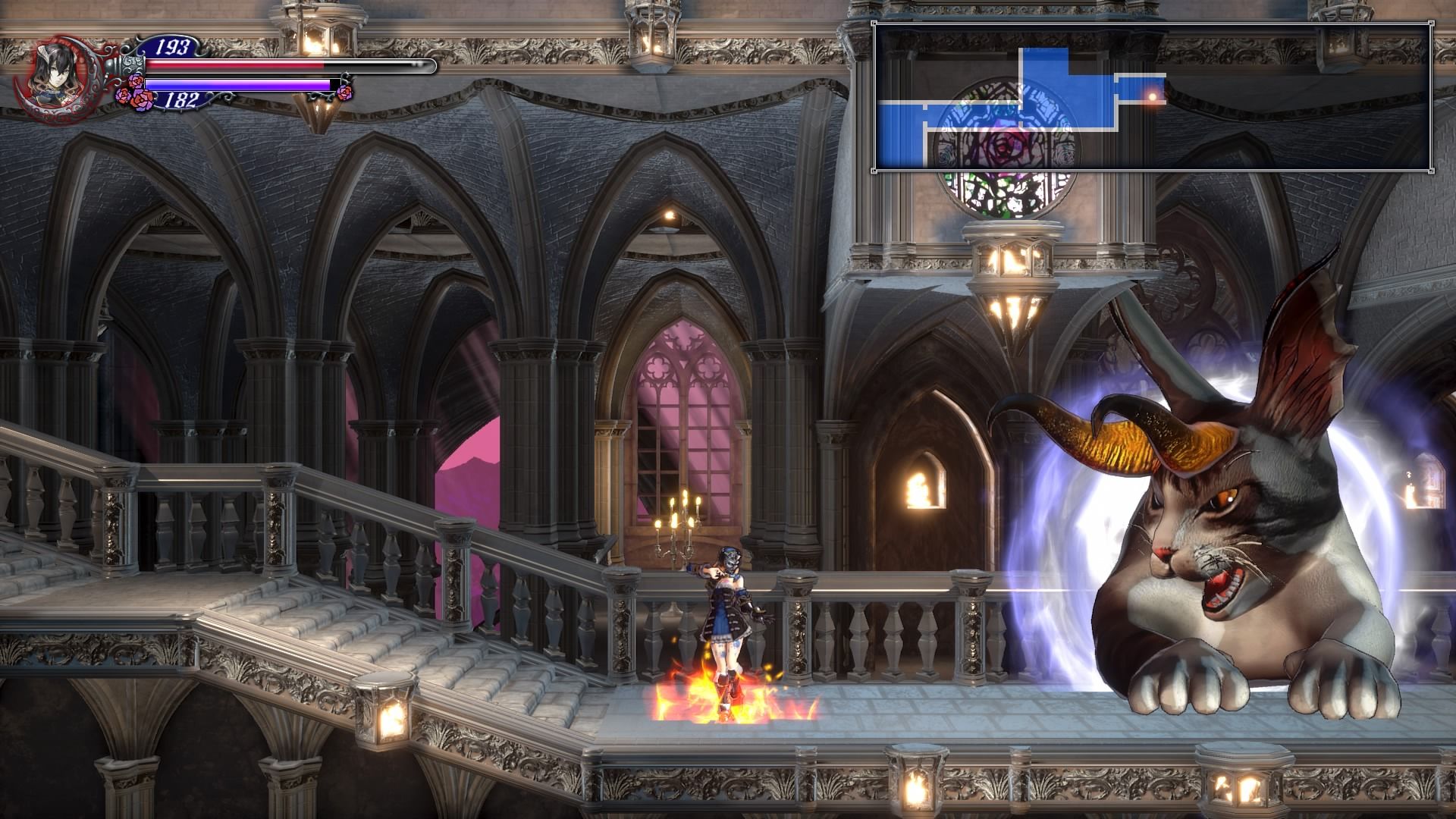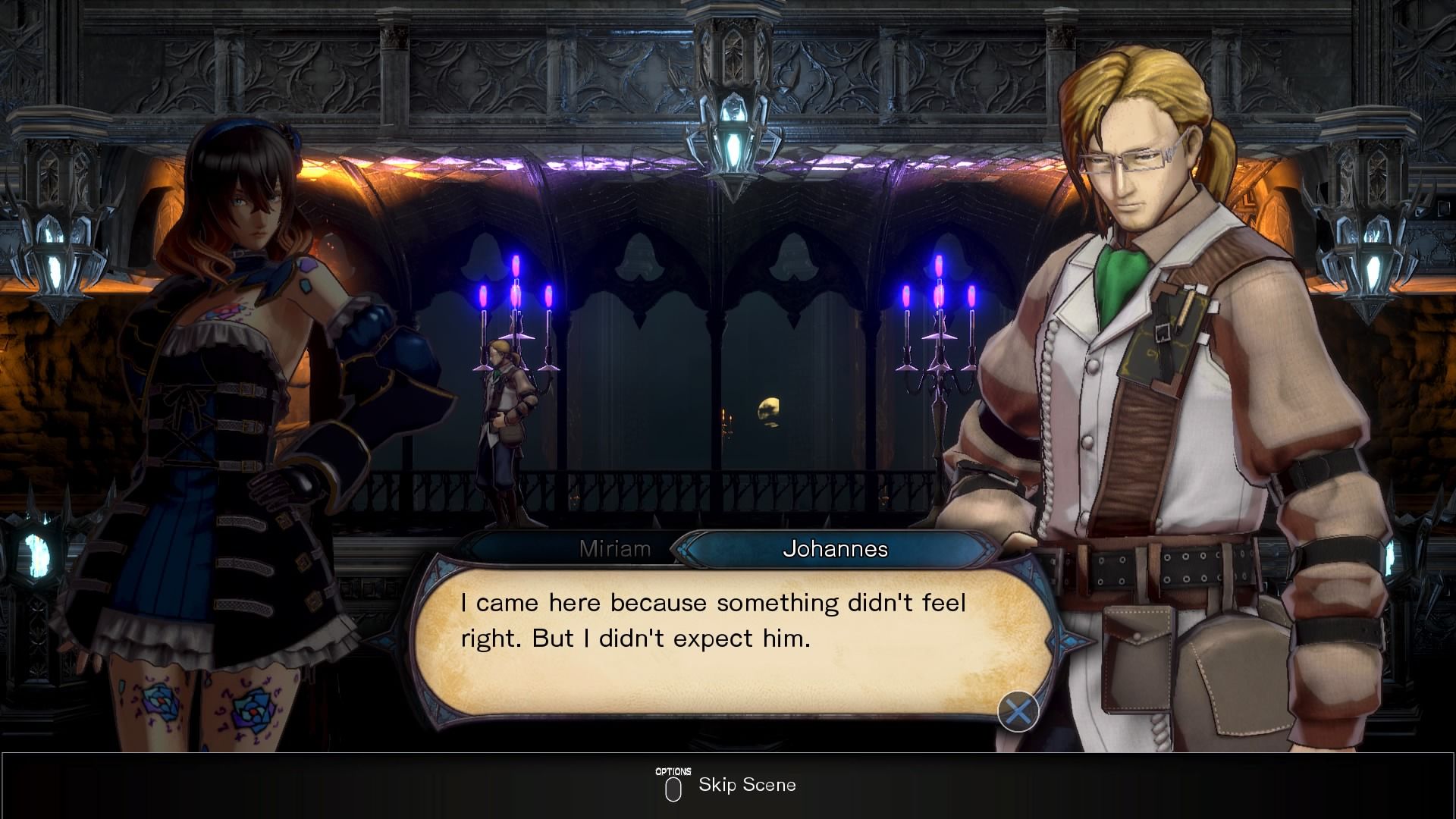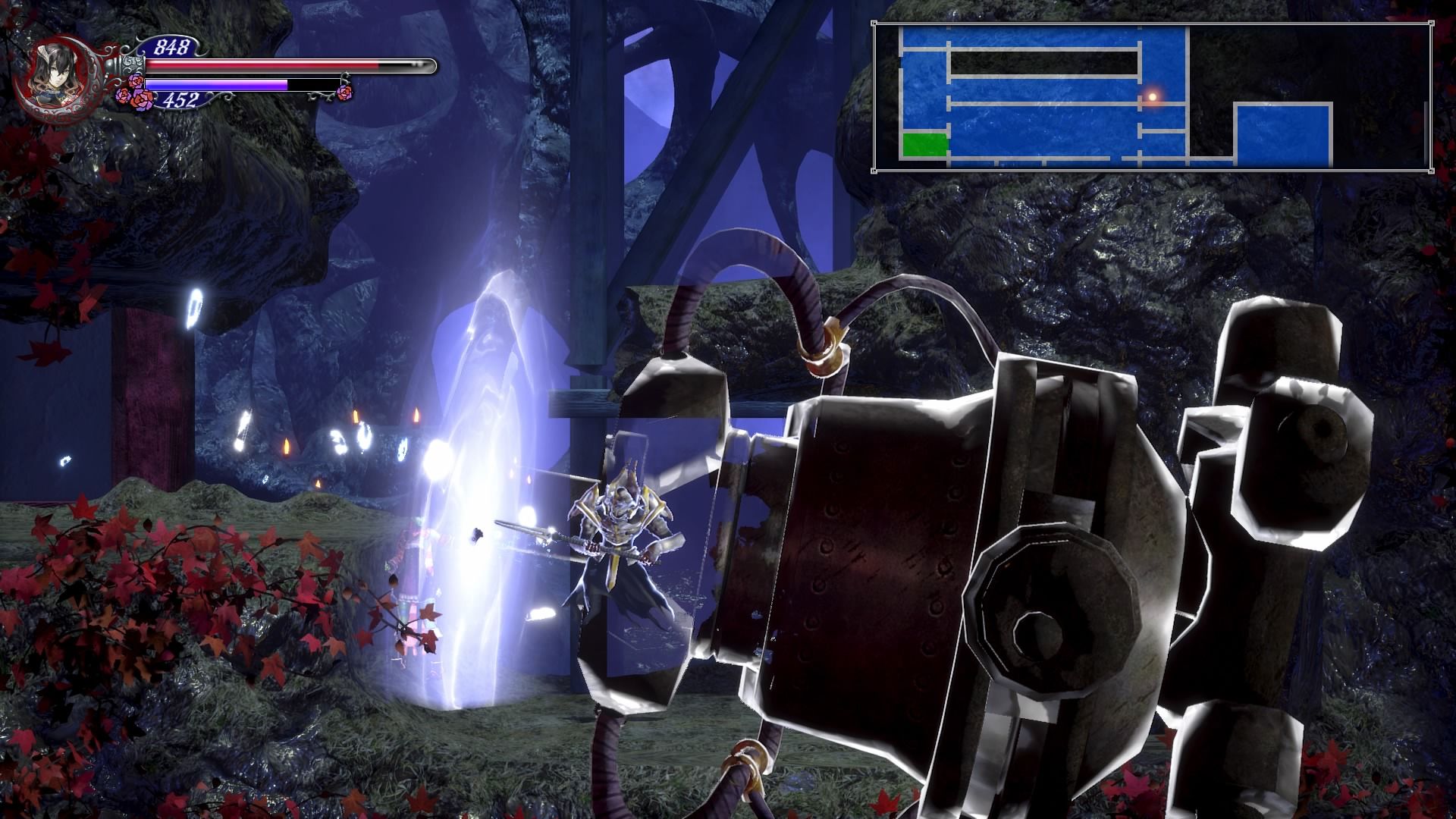Koji Igarashi returns on his Kickstarter promise with Bloodstained: Ritual of the Night, a beautiful and feature rich game that is a must-buy.
It’s really the jumping slash that does it, that direct leap towards an enemy followed by a quick click of the attack button to connect. That glass-smashing audio cue that accompanies each strike, combined with the brief luminescent flash of numeric damage appearing to tell you that, yes, the newly minted katana or greatsword you’re wielding is slightly better than the last, and maybe even comes with its own dazzling elemental effect. The feel of that combat maneuver is one of those small but consequential and beautiful touches that can be hard to identify or single out in a game’s description, and is one of many beautiful checkboxes that Bloodstained: Ritual of the Night proudly marks outright with a flourish. The word “Castlevania” might not be anywhere in sight, but any fan of the Symphony of the Night entry in the series — as well as some of the heartier follow-ups, especially the ones released for the Gameboy Advance and Nintendo DS — will find themselves helplessly absorbed into its satisfying gameplay and exploration through a massive, vibrant environment.
Our heroine Miriam is a “shardbinder,” able to tap into the powers of slain supernatural enemies on her journey to rescue her friend and fellow shardbinder Gebel, presently dangerous and trapped under a demon’s thrall. The Castlevania series has traditionally drawn from gothic literature and pop culture for its visual aesthetic, and Bloodstained edges into that domain while toning down on the Universal Monsters shtick to chisel out its own aesthetic. Shardbinders sport various stained glass tattooed body parts which coincide with absorbed crystals, granting the game something of its own idiosyncratic character, further enlivened by the well rendered artwork and smooth animations of the varied enemies.
The compelling loop of killing enemies for loot and shards, unlocking new traversal abilities, and solving puzzle-like mysteries to progress the story carries Bloodstained ably from start to credits, and it’s a marvelously engaging quest. Miriam’s surroundings are a feast for the eyes, with intricate three-dimensional architecture shifting in the background, packed with ornate designs, torches, shimmering fabric, and hallucinatory vistas of the cloud-covered moon peeking through marble pillars and verandas. It looks so good that it’s altogether distracting for the first few hours, confidently bringing the aesthetic of the classic Igavania games up to a modern graphical yield that sometimes even strains the system; occasionally the game chugs a little, a niggle which was mostly absent in any of Igarashi’s other produced games.

It’s a slight demerit when compared to the quality of the gameplay basics, all of which feel perfectly executed, building on the mechanics of games like Castlevania: Aria of Sorrow while adding new little wrinkles and even a heightened sense of speed. Much like Aria and Harmony of Dissonance, defeated enemies have a chance to drop a number of items, including new powers, boosts, and abilities which Miriam can equip, upgrade, and activate with her reserve of magic. Some synergize with others in practice; slowing an enemy down, throwing a trap or life-sucking ball of dark energy in front of them, then powering up a stat boost to finish them off, for instance. Unless you relentlessly farm specific areas, it’s not uncommon to find yourself near the end of the game while still missing a few interesting crystals (and maybe even bemoaning the fact that you could have used them earlier). It’s a hugely fun and satisfying system that rests upon several others of only moderate quality; cooking up an intricate collection of dishes for a one-time upgrade to stats never quite gels, and a few stray quests seem shoehorned in to make repeated ventures through areas feel more purposeful. These systems don’t really detract from the game at all — they’re largely optional, despite some considerable rewards — they just don’t feature the blinding polish present in most of the combat, boss fights, and exploration.
If fans come to Bloodstained looking for a story, it’s certainly available and fully-voiced, and none of the actors miss their beats. That being said, the plot isn’t memorable or deep, but it does work itself into the gameplay in occasionally captivating ways; specifically, the David-Hayter-voiced Zangetsu can be quite compelling, and appears throughout the story as a well-drawn character who is alternately foil and friend. Miriam herself is kind of tugged through the machinations of the plot, with her character qualities and dialogue mostly forgettable but hardly amateurish or thoughtlessly presented. She’s a fitting lead, and the painful-looking animation of each crystal shard absorbing into her body makes you sympathize with her as a self-sacrificing supernatural protector.

Other predictable features include alternate endings and those superb bosses to fight, with some boss encounters firmly standing among the best of the Castlevania franchise. Also, for those who played through the 8-bit prelude Bloodstained: Curse of the Moon, it’s a thrill to finally square off against the high-definition versions of those end-stage scraps, as well as just getting to see the main-course characters themselves. Michiru Yamane returns once again to helm the soundtrack (similar to the bosses, it’s great fun to finally hear her non-NES-styled renditions of the previous game’s OST), and her stellar compositions are a frequent highlight, the best ones getting stuck in your head, as intended. Whether these pieces will stand the test of time amid Yamane’s iconic works of the past 20+ years of Castlevania games is hard to ascertain at this point, but it’s a gorgeous soundtrack that meets the generally high quality of the game it was produced for.
The fan service throughout is judicious yet welcoming. For such a beloved and substantive series, Bloodstained is able to hit broad celebratory tropes of Castlevania’s past, but also mines the tiniest of details for superfans to pluck at. Consider the NPC who can be found in the Livre Ex Machina area, and how the little slot under his chair which leads to the room below directly calls back to the Long Library in Symphony. There’s a certain boss who sends out crescent sickle projectiles reminiscent of the many manifestations of Death throughout the Castlevania games. The first time players equip a shard familiar, they’ll surely recognize and remember previous familiars like the faerie, and her incarnation in Bloodstained also fondly sits on Miriam’s shoulder. The list of these Easter eggs and references goes on and on, and for a less-celebrated series it might seem excessive or lazy, but ends up feeling good natured among so many new aspects and beautifully constructed arenas to fight through.

It’s unfortunate that some serious issues tainted Bloodstained’s launch, ones which will be difficult for diehard day-one fans and backers to forget anytime soon. A significant bug accompanied a prompt patch which even required a large percentage of players to restart their game from the beginning. Still now, in its current 1.02 version, bugs and inconsistencies torment the game on PS4 (and apparently on PC as well), and it’s not uncommon for games to freeze on load, requiring a full restart. Loading between screens is usually absent, except for the times when it’s not, and pausing at a game-saving couch always feels longer than intended; Symphony’s breezy saves offer no comparison. Also, while hardly a bug, there is a slate of free upcoming DLC which is promised to include things like co-op, a roguelite/permadeath mode, and alternate playable characters, but they’re not in the game just yet. A regular patient playthrough could easily take 15 or 20 hours, so it’s not a matter of the package not feeling full, but it would be nice to be able to immediately start a new game with an alternate character right off the bat.
Bloodstained: Ritual of the Night’s triumphant, record-setting Kickstarter was built on a promise, one which is attentively fulfilled and evident in the craftsmanship and presentation of the finished game. The bugs are the worst of what you’ll find here, and fail to get in the way of one of the finest metroidvanias currently available for purchase. Longtime fans have decades of games to compare this to, but they’ll probably still be bowled over by the myriad of secrets, set pieces, and combat approaches available to them in Bloodstained, a metroidvania that feels eminently modern but also notably graceful and considerate to its history. This is a must-play game that — with a few more bug-fixes and substantive DLC — will likely end up on most best-of lists by the end of 2019.
Bloodstained: Ritual of the Night is available now on PlayStation 4, Xbox One, Steam, and Nintendo Switch with a retail price of $39.99. A digital PlayStation 4 code was provided to Screen Rant for purposes of review.




